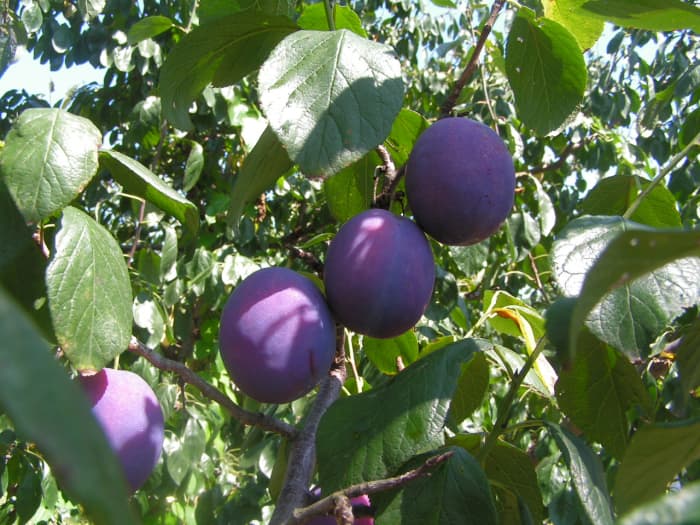

Drive the stake into the ground to the side of the hole to at least 2 feet deep.


Plant plums in deep, well-drained soil that is moisture retentive.Plums can tolerate partial shade, but the yield will be less. Plant bare-root trees when they are dormant in late winter or early spring. Plum trees can be purchased bare root, balled and burlapped, or in a container.Choose a plum that can tolerate winter cold where you live.American plums originated in the United States. They tolerate drought and require well-drained soil. American plums ( Prunus americana) are the most cold-tolerant.Japanese plums ( Prunus japonica) are semi-hardy they grow best in Zones 6 to 10 some will grow in zones colder than Zone 6.Subspecies of European plums are damsons and bullaces. They can tolerate clay soil, but loamy soil is best. They are late blooming and are usually not damaged by frost. European plums ( Prunus domestica) grow best in Zones 4 to 9.Japanese plums will grow anywhere peaches will grow.European and American plums will grow anywhere apples grow.Plums can be broadly divided into three types: European, American, and Japanese.Contact the nearby Cooperative Extension Service for plum varieties that grow best in your area. European plums How to Choose the Right Plum Tree


 0 kommentar(er)
0 kommentar(er)
